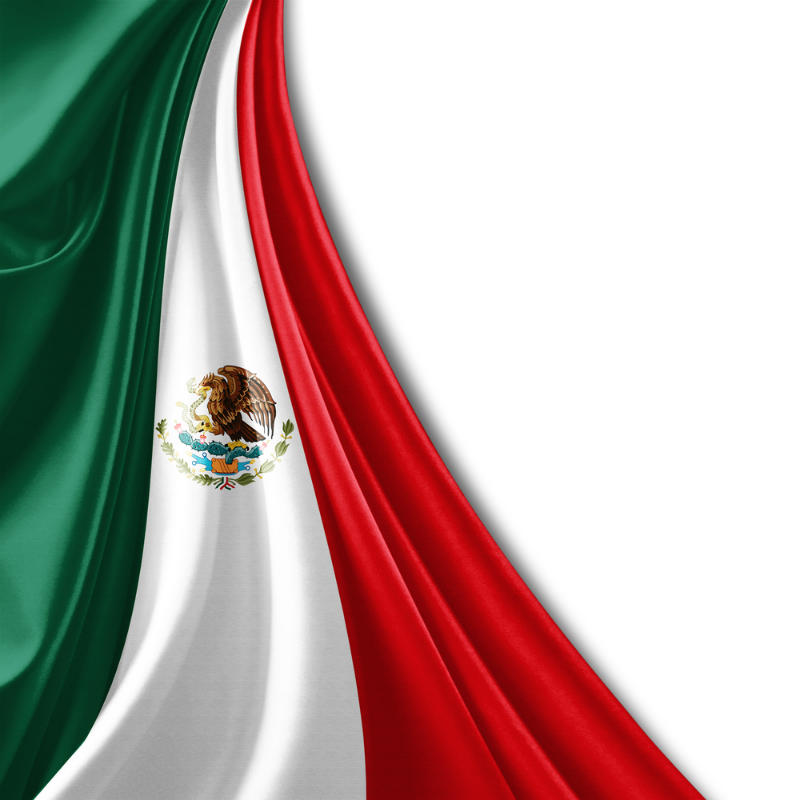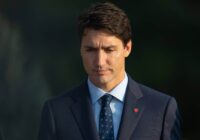Despite the fact that Mexico’s economy does not demonstrate any real signs of weakness, the peso has been one of the hardest-hit currencies in emerging markets of late.
On February 17, Mexico’s central bank made the surprising move of raising the country’s interest rates by 50 basis points to 3.75%. At the same time, that institution, formally known as El Banco de Mexico (or the Bank of Mexico), announced that it would begin to sell American dollars directly to buyers in the marketplace. The goal of these measures is to stop the strong devaluation that the Mexican peso is suffering versus the currency of the United States.
At the moment, it seems that this decision is having an impact. Before anyone became aware of it, the value of the peso recovered a great deal of the ground it had lost in recent weeks. In 2015, the peso fell by 17% relative to the dollar. So far this year, before the intervention of the Bank of Mexico, the peso had fallen by 10%, marking a historic low point of 19.44 pesos to the dollar during early February. (By March 2, the Mexican currency had recovered somewhat to 17.81 pesos to the dollar.)
“Starting with the last meeting about monetary policy, the volatility of international financial markets has increased, and the Mexican economy has faced an environment that has continued to deteriorate,” noted Agustin Carstens, governor of the Bank of Mexico, in a press conference. At the same time, he made it clear that the decisions that have been taken do not indicate the beginning of a cycle of monetary contraction. “Going forward, the governing council will follow very closely the evolution of all of the determining factors of inflation, and its expectations for the medium and long-term horizon, especially [regarding] the exchange rate and its possible impact on consumer prices,” he added.
A Peculiar Situation
Until the intervention of the country’s central bank, the Mexican peso was one of the hardest-hit currencies in the emerging markets. This was especially notable because the economy of Mexico does not demonstrate any real signs of weakness, growing at a rate of 2.5% last year—compared with the 1% rate of Latin America as a whole. The International Monetary Fund (IMF) is forecasting growth of 2.6% for this year, while the Organisation for Economic Co-operation and Development (OECD) is forecasting that Mexico’s real gross domestic product (GDP) will grow in excess of 3% in both 2016 and 2017. So, what’s at the root of the peso’s instability?
“In reality, the devaluation of the peso does not reflect any … special concerns about the Mexican economy,” notes Eugenio Gomez, professor of economics at the IPADE Business School in Mexico City. In his view, what’s taking place is an appreciation of the dollar versus many other currencies, due to the recovery of the US economy following the financial crisis and the resulting changes in monetary policy. “This is something that can be appreciated when you consider the devaluation that other currencies have suffered. For example, Chile and South Africa have suffered devaluations similar to what Mexico saw during 2014-2015, while in such countries as Colombia and Brazil, the devaluation has been twice as big as that of Mexico,” he says.
Einar Moreno Quezada, academic director of the department of finance and accounting at the University of the Americas in Puebla, Mexico, agrees: “More than a depreciation of the peso, we find that we are dealing with an appreciation of the dollar… The conditions that the economy of the United States offers, starting with the increase in its interest rates, are more attractive for investors. And as a result, the demand for dollars is growing, and [the dollar] is appreciating.” Meanwhile, “the risk level for those countries whose budgets are highly dependent on the petroleum industry—such as Mexico—continues to grow as a result of the decline in the price of crude,” he adds.
According to Mauro Guillen, director of Wharton’s Lauder Institute, “The Mexican peso has evolved in a way that is consistent with a strong-dollar scenario. It makes Mexican exports more competitive in its main market—the US—and it makes Mexico more attractive as an investment destination. Mexico stands to benefit from the dynamics in global currency markets at the present time.” However, he adds a caveat: “Obviously, more currency weakness in China would erase part of these gains [on the part of Mexico,] because Mexico competes head-to-head with China for exports of auto parts, electronics, toys and clothing to the US market.”
Moreover, many analysts note that the Mexican peso has the virtue of being the most highly traded currency in emerging markets—a fact that imposes a curse on the peso in foreign exchange markets. The current depreciation of the peso is due to the fact that it is often used as a hedge in times of great volatility, they note. International investors like to use the peso for protection to a great degree because it is traded 24 hours a day, five days a week. This is something that occurs with only two other emerging market currencies: the South African Rand and the Turkish Lira.
However, Moreno Quezada points out that because the peso is now in demand 24 hours a day, it is more exposed to the ups and downs of markets during times of increased volatility than other emerging market currencies. “This is a currency that is being used for doing business all around the world. As a result, it is highly sensitive to movements of other currencies. That’s why there is no guarantee that the peso will maintain a constant volatility throughout time,” he notes.
Effects on the Economy
For Gomez, the devaluation of the peso can have consequences that are as positive as they are negative. “On the negative side, it can generate inflationary pressures because of the increased prices for imported goods—although these pressures have proved to be particularly weak lately, due in part to some other factors such as the worldwide decline in commodity prices, which has meant very low inflation rates in many countries. With regard to its positive effects, a cheap peso can favor tourism and [certain] exports,” he adds.
Moreno Quezada believes that even if there are no visibly significant effects on inflation, “clearly, there are positive and negative impacts.” On the one hand, he notes, there can be an economic impact because of remittances. On the other hand, he worries about the financial strangulation of those companies that have debt denominated in dollars but did not foresee that the dollar would rise to the levels that are now being observed. “The people who currently receive such remittances are maximizing their purchasing power by converting their dollars into more pesos than in the past. However, those enterprises that have taken out loans in dollars—but whose operations are in pesos—have the disadvantage of having to pay off the interest on their debt with a larger quantity of pesos.”
In this situation, when there are both positive and negative effects, the Bank of Mexico finds itself at a crossroads. Recently, it has opted to intervene by raising interest rates. Some economists believe that current macroeconomic data does not support that move, and that it could damage growth. However, inflation is not showing any signs of accelerating. Consumer prices in Mexico rose by 0.38% in January, reaching an annual rate of 2.61%, which is very close to an historic low point, and close to the central bank’s target of 3%.
Pedro Javier Uriz Borrás, economist at BBVA Bancomer, the largest bank in Mexico, told Reuters on February 15 that although monetary conditions suggest the possibility that interest rates might rise, there is not necessarily any magical solution for raising the value of the Mexican peso. Carlos Capistrán, chief Mexico economist at Bank of America Merrill Lynch, told Reuters that any rise in interest rates in Mexico would have the goal of counteracting a possible increase in rates by the US Federal Reserve. However, this is something that seems more and more unlikely, given the weakness of the global economy and the strength of the dollar. “To the degree that the global situation begins to improve, the Mexican peso exchange rate will do likewise,” predicted Capistrán.
 Among analysts, the most commonly held opinion is that the peso will gain strength over the course of the year, supported by the strong fundamentals of the Mexican economy. According to Gómez, “The peso has been devalued more than we would usually expect, given the fundamentals of the Mexican economy.” He believes that this is a typical process of overshooting, which is common during periods of devaluation. “In this sense, it would be appropriate to expect that the Mexican currency will recover following the period of volatility. Nevertheless, it is hard to know when that would occur. Towards the end of 2016, the peso-dollar exchange rate could return to about 17 pesos per dollar. This will depend on various factors, of which the most important is the management of monetary policy in the United States.”
Among analysts, the most commonly held opinion is that the peso will gain strength over the course of the year, supported by the strong fundamentals of the Mexican economy. According to Gómez, “The peso has been devalued more than we would usually expect, given the fundamentals of the Mexican economy.” He believes that this is a typical process of overshooting, which is common during periods of devaluation. “In this sense, it would be appropriate to expect that the Mexican currency will recover following the period of volatility. Nevertheless, it is hard to know when that would occur. Towards the end of 2016, the peso-dollar exchange rate could return to about 17 pesos per dollar. This will depend on various factors, of which the most important is the management of monetary policy in the United States.”
Moreno Quezada is somewhat more pessimistic about the evolution of the Mexican peso in coming months. He argues that “notwithstanding the strengths of the Mexican economy, the dollar continues to gain strength. Moreover, although the peso may show its true value relative to the dollar over the medium term, it will be quite a while before investors reassess their views regarding the advantage of investing in Mexican pesos.”
*[This article was originally published by Knowledge@Wharton, a partner institution of Fair Observer.]
The views expressed in this article are the author’s own and do not necessarily reflect Fair Observer’s editorial policy.
Photo Credit: ChameleonsEye / AGCuesta / Patrice6000 / Shutterstock.com
 We bring you perspectives from around the world. Help us to inform and educate. Your donation is tax-deductible. Join over 400 people to become a donor or you could choose to be a sponsor.
We bring you perspectives from around the world. Help us to inform and educate. Your donation is tax-deductible. Join over 400 people to become a donor or you could choose to be a sponsor.
Support Fair Observer
We rely on your support for our independence, diversity and quality.
For more than 10 years, Fair Observer has been free, fair and independent. No billionaire owns us, no advertisers control us. We are a reader-supported nonprofit. Unlike many other publications, we keep our content free for readers regardless of where they live or whether they can afford to pay. We have no paywalls and no ads.
In the post-truth era of fake news, echo chambers and filter bubbles, we publish a plurality of perspectives from around the world. Anyone can publish with us, but everyone goes through a rigorous editorial process. So, you get fact-checked, well-reasoned content instead of noise.
We publish 2,500+ voices from 90+ countries. We also conduct education and training programs
on subjects ranging from digital media and journalism to writing and critical thinking. This
doesn’t come cheap. Servers, editors, trainers and web developers cost
money.
Please consider supporting us on a regular basis as a recurring donor or a
sustaining member.
Will you support FO’s journalism?
We rely on your support for our independence, diversity and quality.








